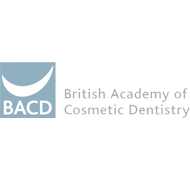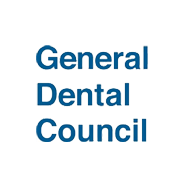‘Gaps’ usually refers to the space left by missing teeth, although sometimes they may be due to natural spacing between the teeth. Teeth may be missing because they have been removed due to disease [e.g. dental decay (caries) or gum disease (periodontal disease)], or because they have failed to develop [hypodontia]. This failure for a tooth or teeth to grow is relatively common affecting 3-8% of the population. Although it is not always necessary to replace missing teeth it is often done for appearance reasons or because of problems with speech or eating.
There are a number of ways to replace teeth and these include dentures, bridges, and implants.
Dentures
These may be used to replace one or all teeth except the very back molars because to do so would make wearing the dentures more difficult. Dentures that replace a few teeth are called partial dentures while those replacing all the teeth are called complete dentures. Complete dentures stay in place by suction and muscular control. When complete dentures are worn for the first time many people may find them strange and difficult to control. However, with guidance from a dental professional, within a short time control is usually acquired.
Partial dentures are made of acrylic or metal and acrylic. Sometimes they incorporate wires which are attached to remaining teeth to help to keep the dentures in place. In certain circumstances, the teeth are prepared with small depressions in them [rest seats] to aid in supporting the more sophisticated metal alloy dentures. Partial dentures made of metal are more easily designed to rest on the remaining teeth. This is healthier than covering the gums. Metal is stronger than acrylic and is therefore thinner and often more comfortable to wear, however it is much more difficult to add additional teeth to a metal denture if more teeth are lost.
It is most important that dentures and the remaining natural teeth are kept very clean to prevent the damaging effect of plaque.
Dental Implants
These are metal screws placed within the jaws on which artificial teeth can be supported. The process involves the surgical placement of a titanium screw in the jaw bone. The operation is usually carried out using local anaesthetic. Sometimes a sedation drug may be advised to make the patient feel more relaxed. In rare circumstances, general anaesthetic is used. This is normally done in a hospital. Although there are reports of implants being used immediately to support dentures, the standard and tested protocol is to leave an implant for between three and six months to allow the bone to fuse to it, before it is used to support false teeth or crowns. Implants may be used for a variety of dental restorations. These include dentures, bridges, and single teeth. The success rate for treatment is high [90 percent]. Age is not an important factor although implants are not generally recommended for growing individuals. Smoking has been conclusively shown to reduce success.
Not everyone is suitable for this form of treatment. Enough bone is necessary to hold the implant in place and an excellent standard of oral hygiene is necessary for long-term success.








